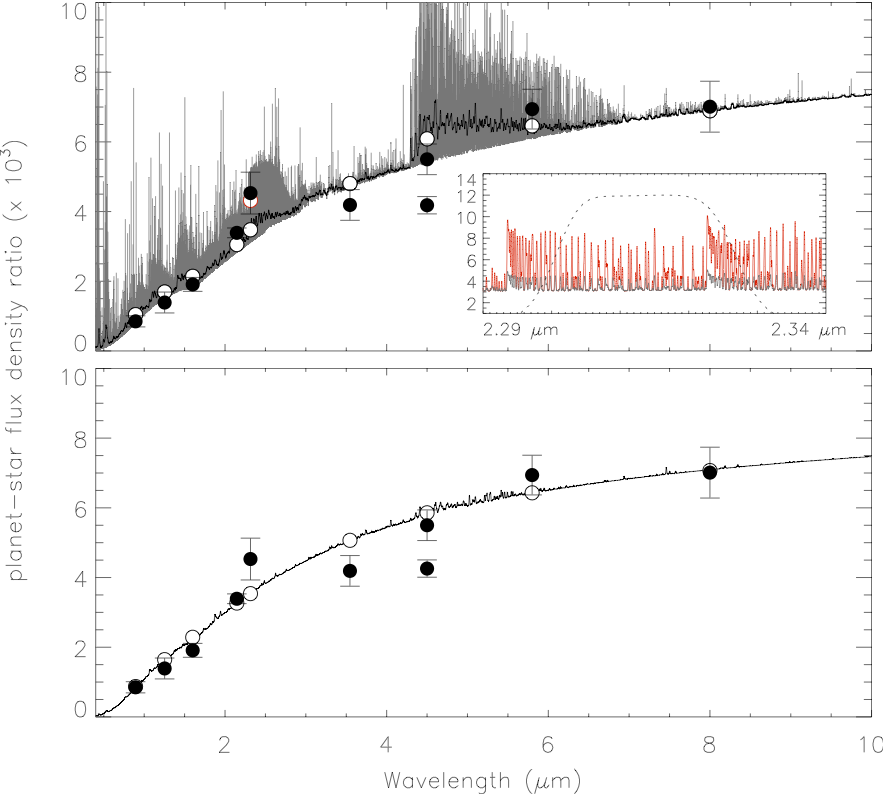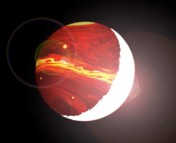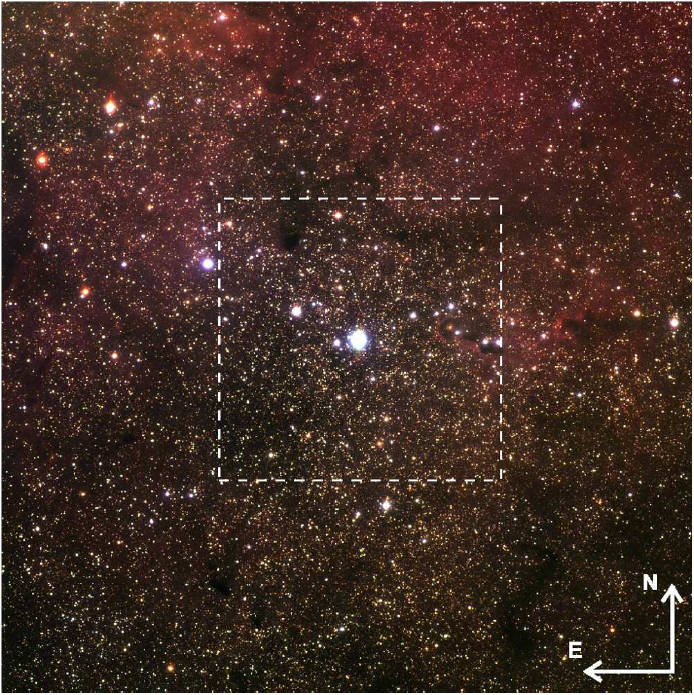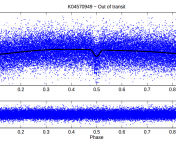Title: Re-evaluating WASP-12b: Strong emission at 2.135 microns, deeper occultations, and an isothermal atmosphere
Authors: Ian Crossfield, Travis Barman, Brad Hansen, Ichi Tanaka, Tadayuki Kodama
First Author’s Institution: Max Planck Institute for Astrophysics, Heidelberg.
This week there’s been a flurry of excitement in the news about new exoplanet discoveries. First, a group of citizen scientists helped to discover a planet in a 4-star system (see here for a summary, here for the paper). Then the Swiss HARPS team that they found evidence for an Earth-mass planet orbiting our nearest star, Alpha Cen B! I was going to write about this new planet—now the closest exoplanet to us—but others have already done a great job. (For example, Phil Plait over at Bad Astronomy, Greg Laughlin’s take at his blog; see also, this older piece about the team led by Debra Fischer who was also looking for a planet around Alpha Centauri).
But astronomers don’t stop after discovering all of these diverse planets, in systems near and far from our own solar system. The next big step is to characterize the planets. We want to understand their compositions, what their atmospheres look like, whether they have clouds, how massive they are, how old they are, etc. As it turns out characterizing exoplanets is really, really challenging for both observers and modelers.
WASP-12b
The challenges encountered are well illustrated by the saga of WASP-12b. WASP-12b is one of the hottest exoplanets, literally: it’s equilibrium temperature is 3000 K (plus or minus 200 K)! The hot planet emits radiation. When the planet passes behind its star in a secondary eclipse, the star blocks the planet’s radiation, and the system briefly becomes fainter. We can measure the difference between the system’s brightness during secondary eclipse and when the planet is visible; this tiny difference is the light from the planet alone. If we make this measurement at many different wavelengths, we can make a low resolution emission spectrum of the planet.
A Carbon Planet?
A paper by Madhusudan et al. (2011) analyzed the emission spectrum of WASP-12b and determined that the planet must have more carbon than oxygen in its atmosphere. This would be very different from anything in our own solar system; in the sun, there’s about half as much carbon as oxygen. In such an exotic planet with more carbon than oxygen, rocks would form into carbides instead of silicates (see this recent astrobite), and the atmosphere would have very different molecules (see this astrobite): much more carbon monoxide and methane and much less water vapor. The idea that WASP-12b is such a planet, with dramatically different chemistry, was a major claim.
Re-Evaluating the Carbon Planet Hypothesis
This extra star—based on their observations, an M dwarf—is a problem because it changes all of the secondary eclipse depths by a small fraction, especially in the infrared (where the M dwarf is comparatively brighter). The authors made all the necessary adjustments to the photometry, and reanalyzed the emission spectrum.

Two different images, the first taken with Subaru, the second with the IRTF. Notice the previously unresolved star next to WASP-12. Images from Crossfield et al. (2012).
Additionally, the earlier analysis based on the uncorrected photometry predicted that if WASP-12b really does have a high carbon-to-oxygen ratio, it would have a strong absorption feature at 2.315 microns. Crossfield et al. test this by observing the eclipse with a narrow filter at that wavelength. When this new data point is combined with all the corrected published data, the high carbon-to-oxygen hypothesis is ruled out at a high significance. According to this study, WASP-12b does not have more carbon than oxygen in it’s atmosphere.

Top and bottom: The observed emission spectrum of WASP-12b, recalculated to include the dilution from the second star, is plotted as filled black points with error bars. Bottom: A simple model spectrum of black body radiation from the planet (black line) is shown. Top: A solar composition model spectrum (grey) and that same spectrum smoothed (black) is shown. The inset zooms in on the 2.315 micron observation. The open circles are the model spectrum averaged over the bandpass of each observation. From Crossfield et al. (2012).
However, the authors find that with the current data points, we’re very limited in what we can tell about the structure and composition of the atmosphere. While it rules out certain classes of atmosphere, including the exotic carbon-rich composition, the emission spectrum during secondary eclipse does not provide enough information to determine the atmosphere’s composition. The authors suggest that other avenues of observation, such as transmission spectroscopy, might be more revealing.
This study stresses the need to high angular resolution adaptive optics follow-up for transiting planets, to make sure that other planet-hosting stars don’t also have cooler stars contaminating the observations!





Trackbacks/Pingbacks